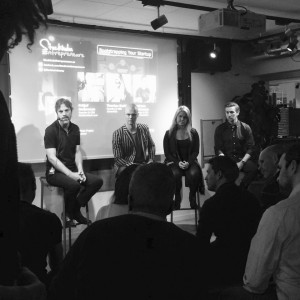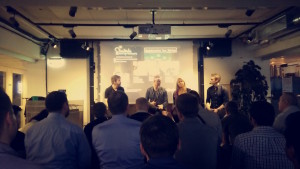That quote came from one of the speakers at yesterday’s Startup event with Stockholm Entrepreneurs at Epicenter. He said that originally this is the expression that bootstrapping your Startup comes from. The speaker, of who’s name I unfortunately didn’t catch, added that this is very difficult to do and that it is easy to get stuck in your “bootstraps”, which I can imagine.

Since Paulina already has written so well about the event, I will only add some more thoughts. I was very impressed of the speakers at this event who all have dedicated their life to their startup.
One tip that I found well is that you have to prioritize. As a starup it is difficult knowing what resources you need and it is easy to throw money at anything. Therefore it is highly important to prioritize the resources you actually need. Also, there are no limitations when you have a startup and you could build your company as you like. Here you find the possibilities! When you lay your time into something, make sure it gives you value now or in the future.
Another important learning when bootstrapping your startup was to early on have costumers, so you at least get some money for the work. The speakers also added that the value of having costumers early in the process is that it gives you a clear view of the market. You need to know the market and the costumers in order to give them a product their willing to pay for.
Lastly it is important knowing what company you have and not comparing with other startups. Some might need funding, others don’t and then there is some in the middle. And be sure of why you want to have a startup, because it will be tough. Make sure to have the right reasons and to keep a positive attitude!
I tweeted a picture of the event and by now its been retweeted by @EpicenterSthlm and liked by one of the panel speakers Therése Gedda at the event. So that made me happy.

